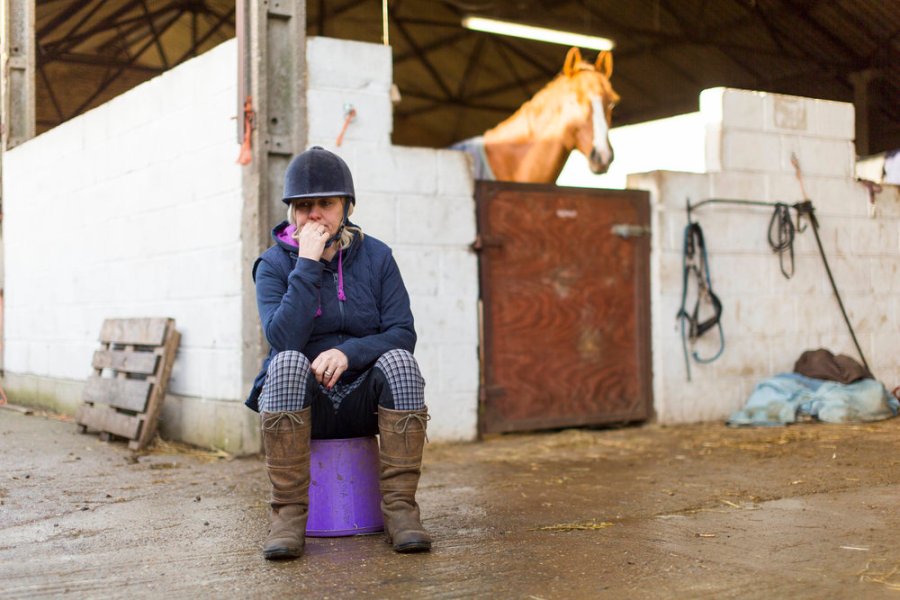Anna Davey, an avid rider, struggled with anxiety and chronic pain for seven years. When it became so crippling that she almost sold her beloved horses and gave up riding forever, she knew things had to change.
In her search for answers, Anna came across BWRT (Brain Working Recursive Therapy), a modern technique that retrains your brain and creates new neural pathways that change the way your mind responds to fear and anxiety. Thanks to BWRT, Anna was able to re-frame past trauma which transformed her health and helped her love riding again. She found the therapy so powerful that she is now a BWRT-trained therapist helping other riders to get back in the saddle by overcoming anxiety and fear caused by a riding accident or a general lack of confidence and imposter syndrome.
Get back in the saddle
Here are Anna’s tips for building confidence in riding.
1. Remember that fear is just a thought
With minor and irrational fears, we can get into a loop of “what ifs”, “what if my horse spooks?” and the list goes on and the more we ruminate on these thoughts the deeper they get ingrained into our neural pathways and the quicker they become a habitual fear reaction to riding. By repeating these negative thoughts and fears you are literally programming yourself and creating the new habit of being a nervous rider.
Recognise the thought loop for what it is and start to stop it in its tracks and replace it with a more preferred and positive thought and feeling. Do this regularly enough and the neural pathways will start to tip back in your favour.
2. Practise relaxation techniques
Modern day life is both a blessing and a curse. We have pretty much everything that we need at our fingertips, information is easily accessible, we live in privileged times. And yet our brains and nervous system have not been able to keep up with the super-fast progress of the past century. Consequently, we can feel stressed, overwhelmed and unsafe quite quickly due to the over stimulation, so we go to our horses with all of life’s stressors swimming around in our minds and bodies and find it hard to switch off.
When we practice relaxation techniques such as progressive muscle relaxation, yoga, meditation, and breath work daily over time we reset our minds and nervous systems to a more resilient level and are therefore less likely to be triggered by riding fears and insecurities.
3. Drop the perfectionism
You’re good enough no matter what your mind is telling you! There is no point in riding if you are not enjoying the process because you are constantly too hard on yourself. Being too hard on yourself, self-criticism or feeling like you are not enough or not doing a good enough job is a form of self-torture and becomes a stressor to the body and mind.
You started riding for pleasure, joy, freedom and fun – always remember that and also remember that where you are right now with your horse is just fine. Things will improve, they always do, so let it go and allow yourself to be imperfect while you work through any challenges that might be coming up.
4. You do not have to struggle alone
For the really big traumas and fears caused by a riding accident which have resulted in a state of chronic freeze, procrastination, avoidance or flashbacks creating unwanted ‘fight or flight’ physiological responses that your subconscious mind is unwilling to let go of, consider seeking help.
Be willing to invest in yourself. As riders we tend to buy our horses everything that they need and more, but we don’t always do the same for ourselves. The right therapy, such as BWRT can quickly and efficiently eliminate the issues that are blocking you, allowing you to get back to the joy of riding. BWRT uses natural psychological processes to recondition neural pathways in the brain that lead to unwanted behaviour.
Once you’ve sought help, you’ll be pleased that you did. Not only will it help you regain confidence, but it will also improve your relationship with your horse as they will react positively to your new-found confidence.
To find out more about Anna Davey and her work, click here.
Check out our subscription offer









